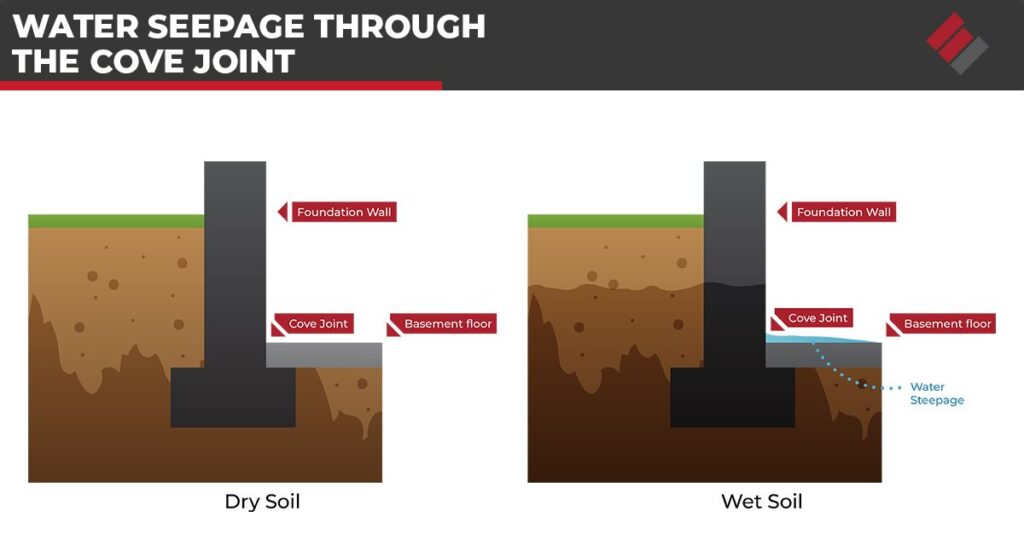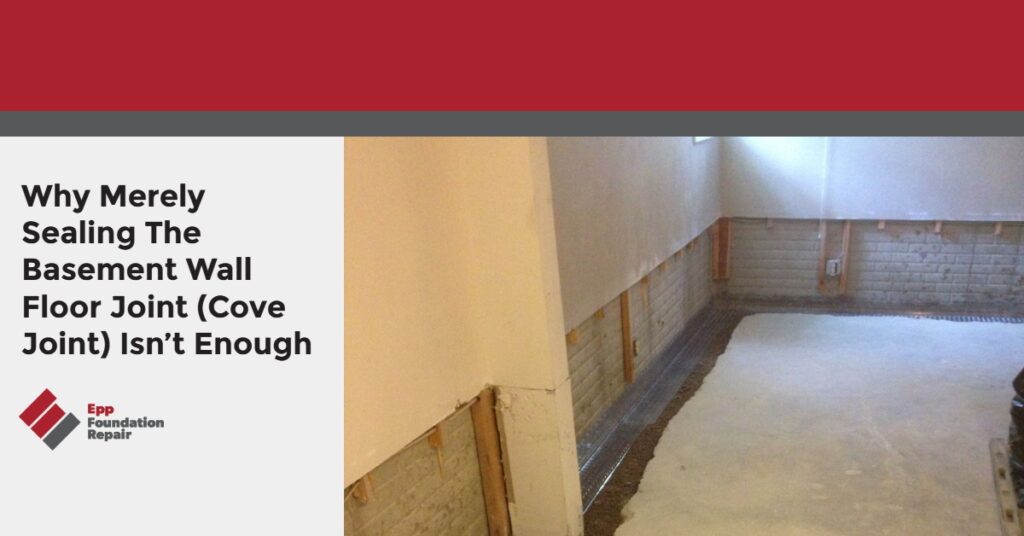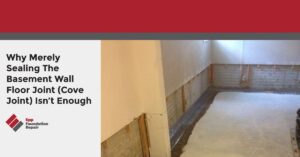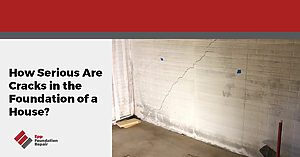If you’re searching for information about sealing the basement wall floor joint, you probably have a wet basement. If so, you’ve landed on the right page, so don’t hit that back button.
In this article, we’re going to talk about why sealing basement wall floor joints (commonly referred to as “cove joints”) isn’t enough, a better way to keep water out of your basement, and other things you can do to keep your basement dry.
What is a cove joint?
The cove joint is where the basement wall and the basement floor meet. Notice from the illustration below that basement walls aren’t fused to the footing. If there’s excess water in the soil around the foundation, hydrostatic pressure builds up and pushes water through the cove joint and into your basement. If there’s no excess water in the soil around the foundation, hydrostatic pressure won’t build up, and no water will be pushed through the cove joint and into your basement.
So, why is there sometimes excess water in the soil around a foundation?
Excess water in the soil around the foundation happens because of poor drainage. Without a drainage system, water builds up in the soil, creating hydrostatic pressure, and this pressure pushes the water through the tiny gap, through the cove joint.
A drain tile system (more on this later) can prevent hydrostatic pressure from building up, and most new homes today come with a drain tile system already installed. Older homes often don’t have a drain tile system, however. Usually, a layer of tar was added to the foundation wall when the house was built, and that was it. Over time, the tar breaks down, and water starts to seep into the basement. Drain tile systems can be installed in existing homes, though. More on this later.

Why merely sealing the basement wall floor joint (cove joint) isn’t enough
While it’s tempting to think that merely sealing the basement wall floor joint (cove joint) will solve the problem, it won’t. Just sealing the basement wall floor joint does nothing to alleviate the hydrostatic pressure built up in the soil outside the basement wall. At best, it will be a temporary fix that won’t hold.
Hydrostatic pressure is strong enough to crack a foundation wall and cause it to bow inward. That means it’s strong enough to push water into your basement through invisible cracks in your basement wall. It will also eventually push water through any seal you create between the basement wall and floor. Water always finds a way in.
In other words, merely sealing the basement wall floor joint is a band-aid solution. It doesn’t solve the root problem, which is excess water in the soil leading to the build-up of hydrostatic pressure.
For more information see Basement Drain Systems: The Secret To A Dry Basement.
Drain tile is a better way to keep water out of your basement
If you want to keep water out of your basement for good, a drain tile system is the way to go because it prevents excess water from building up in the soil. This, in turn, prevents hydrostatic pressure from building up.
There are two types of drain tile systems, exterior, and interior. Here’s how they work:
Exterior drain tile system – An exterior drain tile system can be easily installed when the home is under construction. However, exterior drain tile systems can also be installed in existing homes. The first step is excavation down to the level of the footer. After that, a shallow trench is dug and lined with gravel. A perforated pipe is placed in the trench, covered with more gravel, and then the excavated soil is replaced.
Excess water in the soil will flow into the perforated pipe and be directed away from the foundation via gravity or a sump pump.
Interior drain tile system – An interior drain tile system is installed around the inside perimeter of your basement, under the slab. The slab is broken up using a jackhammer, a shallow trench is dug, lined with gravel, and then a perforated pipe is placed in it and covered with more gravel. If the basement will be finished, the drain tile system will be covered with concrete. If the basement isn’t going to be finished, some homeowners opt to leave it open with just the gravel.
Excess water in the soil under the slab will flow into the drainpipe and be channeled to a sump pit. When the sump pit fills with water, the sump pump kicks in and expels the water away from the foundation.
For more information, see, What Is Drain Tile?
Installing a drain tile system is not a DIY project. Installing an exterior drain tile system means excavation down the level of the footer and installing an interior drain tile system means using a jackhammer to break up your basement floor. In other words, both are major construction projects that should be left to the pros.
Other ways you can prevent water from entering your basement
Although a drain tile system is a gold standard when it comes to basement waterproofing, there are other things you can do that will help prevent excess moisture from building up in the soil around the foundation:
- If necessary, have your yard regraded – The yard around your home should slope away from the foundation. If it doesn’t, water will drain toward your home, pool around the foundation, and find a way into your basement.
- Regularly clean your gutters – Clogged gutters cause water to flow over the side of your home and soak the soil next to the foundation. Remember, the primary cause of a wet basement is water-saturated soil causing a build-up of hydrostatic pressure.
- Install downspout extensions, if necessary – If your downspouts are too short, they’ll release water next to the foundation. Extensions are easy to install and carry the water away from the foundation before releasing it.
- Install an underground downspout and pop-up emitter – Water from the gutters flows into the underground downspout and gets directed to a pop-up emitter situated 10 feet or so away from the foundation. When the pop-up emitter fills with water, it pops up and releases the water away from the foundation.
- Keep water-hungry vegetation away from the foundation – If you’ve read this far, you know why it’s not a good idea to plant water-hungry flowers, shrubs, and trees next to the foundation. You’ll just be adding more moisture to the soil when you water them. This is what you don’t want to do.
If your home has a wet basement and you’re thinking about sealing the basement wall floor joint, contact us first for a drain tile estimate. We serve Lincoln, Omaha, Grand Island, Kearney, NE and more with basement waterproofing services. Call us to schedule an inspection and receive an estimate based on your needs.
Epp Foundation Repair
12305 Gold St, Ste 2
Omaha, NE 68144
Epp Foundation Repair
1619 17th Ave Unit 8
Kearney, NE 68845







